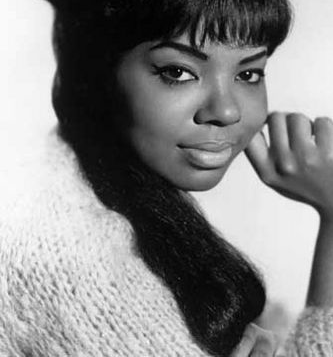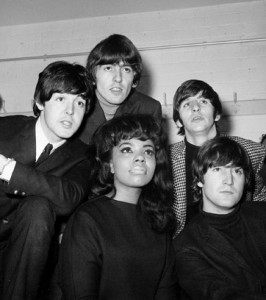 From the MCRFB NEWS archive: 1992
From the MCRFB NEWS archive: 1992
CANCER FELLS QUEEN OF MOTOWN MARY WELLS
NEW YORK — Mary Wells, known worldwide as the “Queen of Motown” for her million-selling hits “My Guy” and “You Beat Me To The Punch,” died of cancer July 26 in Los Angeles. She was 49.
 Wells had been suffering with throat problems for several years and was diagnosed with throat-cancer of the larynx in 1990. She underwent surgery for the condition in August 1990, and received chemotherapy and experimental drug treatment through 1991. According to a close friend, Joyce McRae, the singer’s physical condition worsened earlier this year and she was hospitalized for several months at the Kenneth Norris Jr. Cancer Center at the University of Southern California, where she died.
Wells had been suffering with throat problems for several years and was diagnosed with throat-cancer of the larynx in 1990. She underwent surgery for the condition in August 1990, and received chemotherapy and experimental drug treatment through 1991. According to a close friend, Joyce McRae, the singer’s physical condition worsened earlier this year and she was hospitalized for several months at the Kenneth Norris Jr. Cancer Center at the University of Southern California, where she died.
Says Berry Gordy, founder of Motown Records, “Mary’s recording of Smokey Robinson’s ‘My Guy’ became her signature song, marking the beginning of a new era in the world of Motown and music. She holds a special place in the hearts of millions and a very special place in mine.”
Wells, born May 13, 1943 in Detroit, was a 17 year-old graduate of Northwestern High School when she auditioned for Gordy with a tune she’d written when she was 15. As a result, she became the first artist to be released on the Motown label. (Smokey Robinson & the Miracles and Little Stevie Wonder had their hits on the Gordy-Tamla imprint.
‘First Lady of Song’
“Mary Wells, our first lady of song, came to me with a song she had written for Jackie Wilson called ‘Bye, Bye Baby,” recalls Gordy, who signed the young songwriter on the spot. “I insisted she become a singer. It became her first hit.”
“Bye, Bye Baby” reached No. 8 and No. 45 on the R&B and pop charts, respectively.
“That song got her on Dick Clark’s ‘American Bandstand,'” remembers Esther Gordy Edwards, Berry’s eldest sister and a former Motown VP. “She was our first artist to go on ‘Bandstand’ in Philadelphia, and that was a first big step for us.”

Wells three top-ten pop hits in 1962, all penned by Smokey Robinson: “The One Who Really Loves You,” “You Beat Me To The Punch,” and “Two Lovers.” In 1963, “My Guy,” another Robinson composition, landed in the No. 1 pop position, becoming Motown’s first No. 1 song. Wells also recorded several duets with Marvin Gaye, including “What’s The Matter With You Baby,” b/w “Once Upon A Time,” which were top-20 hits on the pop charts. As the label’s premier artist, she was the first of the Motown acts to tour the U.K., as an opener for the Beatles.
Post-Motown Years
At the age of 21, after a string of successful singles, Wells left Motown and signed a four-year, $500,000 contract with 20th Century Fox and moved to Los Angeles. According to Edwards, Motown sued for breach of contract, and the suit was settled when her new label bought out her contract.
“She was really riding the crest of the wave,” say Edwards, “She was really getting a lot of other offers. She wanted out and she was probably encouraged by others. We hated to lose her… I think she would have been a super, superstar if she would have stayed with Motown because the nurturing and organization she had here was conducive to a great career.”
Wells, who was at the time married to vocalist Herman Griffin, recorded a few albums for 20th Century Fox and continued to release singles, but none reached the same level of success during her earlier Motown hits. A 1965 move to Atco yielded one top-ten hit, “Dear Lover.”
In 1966, Wells married fellow performer Cecil Womack, brother of singer Bobby Womack. (Cecil now performs with his current wife, Linda, as Womack and Womack). In 1967, Wells gave birth to Cecil Jr., the first of four children the couple would have together.

By 1968, Wells was recording for the independent Jubilee label, and then took a break from the recording business in the 1970s to raise her children. In 1978, she began performing again, recording briefly for Warner/Reprise and then Epic, where she had her last major hit in 1982 with the club anthem, “Gogolo.” In 1983, she appeared on the well-acclaimed “Motown 25” television special.
Financial Crisis
Like many R&B artists of the ’50s and ’60s, Wells did not have the business savvy to secure her dues insofar royalty rights, and thus had to perform frequently to keep the bills paid, says Maye James, a childhood friend who served as Well’s secretary and unofficial road manager during her Motown years.
Her lack of financial security became a crisis in 1990, when Wells, a heavy smoker, was diagnosed with cancer of the larynx. With no medical insurance, Wells was unable to pay rent on her Los Angeles home and was evicted.
Doctors told Wells they could save her by removing her vocal cords, an option she rejected. “I miss my voice, you know, but hopefully it will come back,” she once said on an Entertainment Tonight feature the year before she died. “I’ve been singing all my life, I don’t know of any other trade.”
Word of the artist’s plight circulated throughout the music industry and the world. The Washington, D.C. based Rhythm and Blues Foundation, an organization founded to aid financially distressed R&B recording pioneers, came to Wells’ aid with a fund drive that raised $125,000. Berry Gordy made a special cash gift (reportedly $25,000) through the foundation to cover her housing needs. Diana Ross contributed $15,000, Rod Steward and Bruce Springsteen gave $10,000 apiece, and the Temptations gave $5,000. Aretha Franklin skirted the foundation and gave $15,000 directly to Mary Wells.
“Over the two years (since she was diagnosed), we provided the assistance,” says Susan Jenkins, executive director of the foundation, who says fans from around the world sent money to help Wells. “We worked with her family to make sure she got whatever she needed and worked with AFTRA to get her medical insurance reinstated… It speaks a lot to the power of music that we got contributions from all over the world, from people who couldn’t even speak English, for whom the power of Mary’s music impacted their lives.”
Wells was buried July 30 at Forest Lawn Cemetery. A candle-light vigil was scheduled for July 31 in Detroit outside the original Motown offices, known as Hitsville, where the Motown Historical Museum is located. According to Edwards, director of the museum, the vigil was conceived by Smokey Robinson guitarist Marv Johnson and Martha Reeves.
“She was loved,” says Edwards. “Everybody loved everybody, and once a part of that Motown family in the ’60s, you remain a part of it forever.”
Wells, who is divorced from Womack, is survived by two daughters, Stacy and Sugar, and two sons, Cecil Jr. and Harry. END
___
(Information and news source: Billboard; August 8, 1992)
![]()
